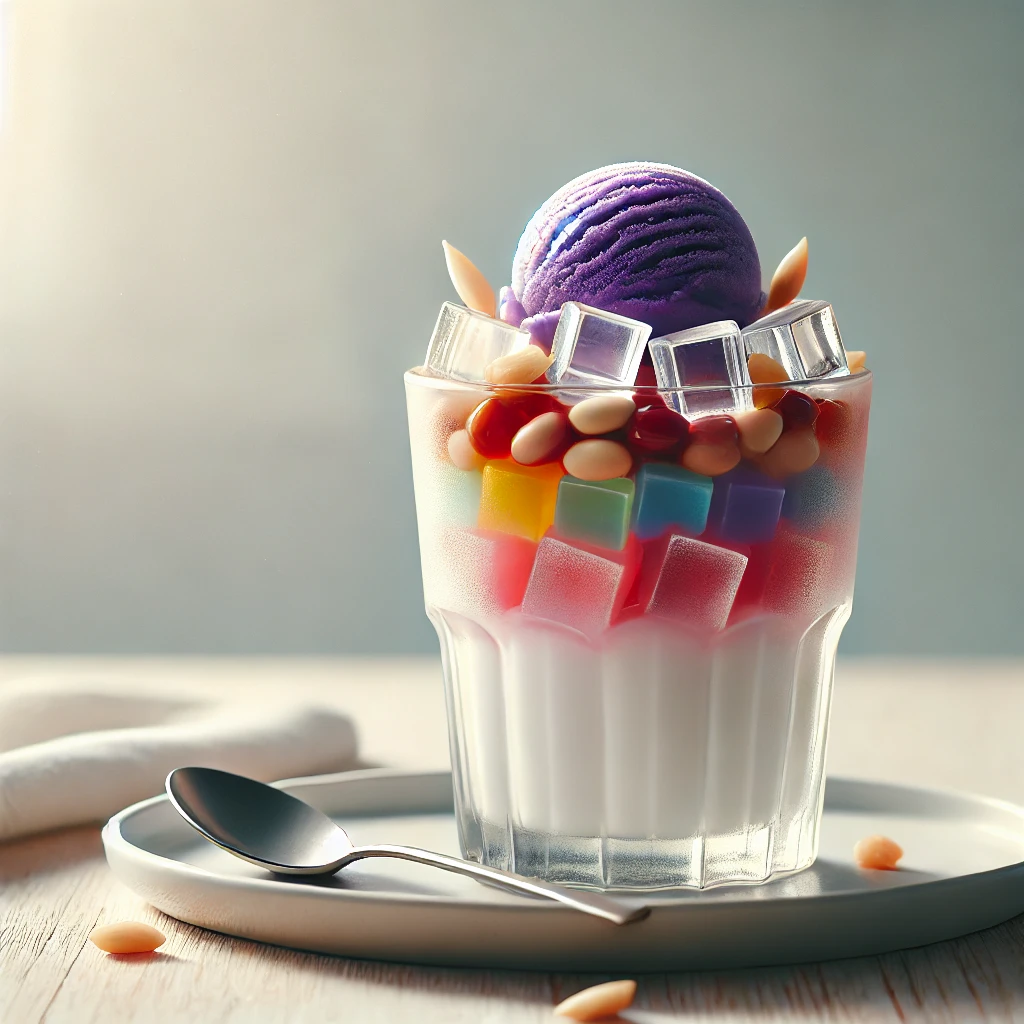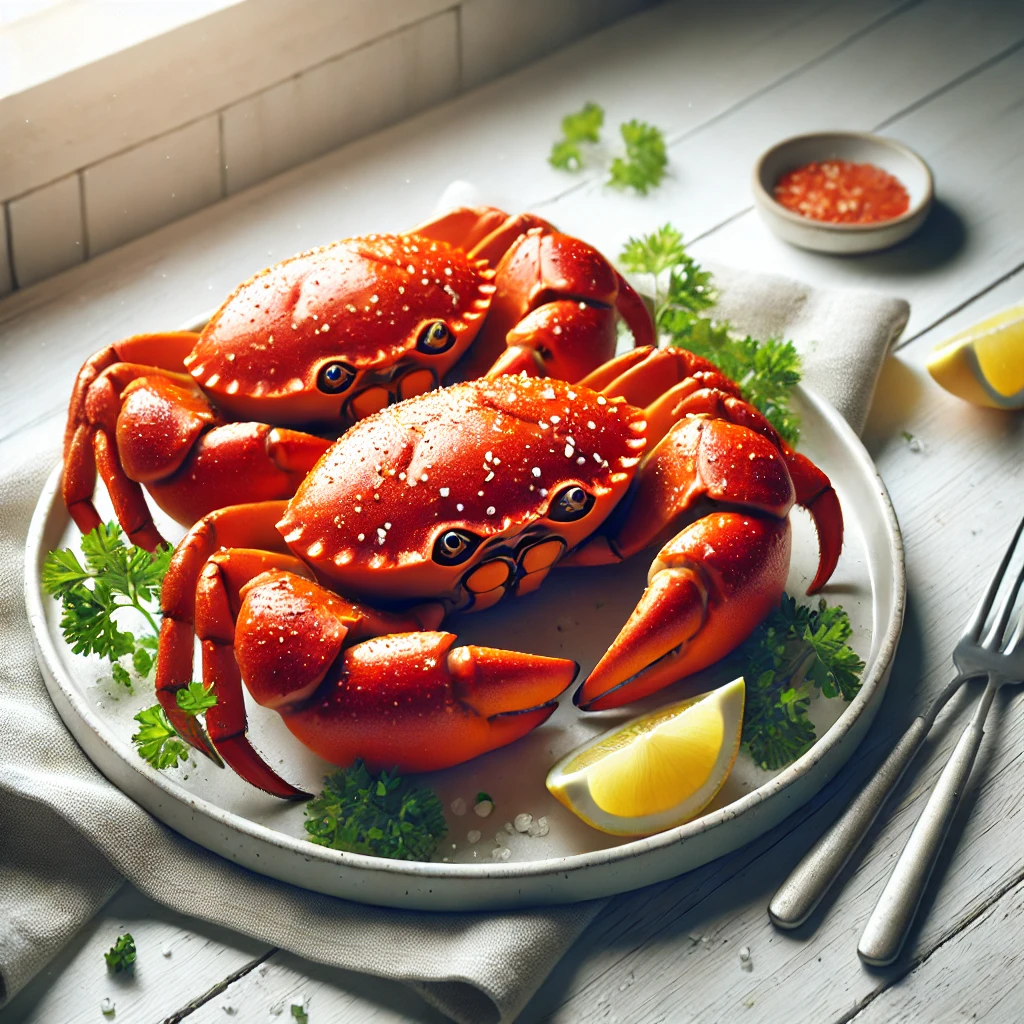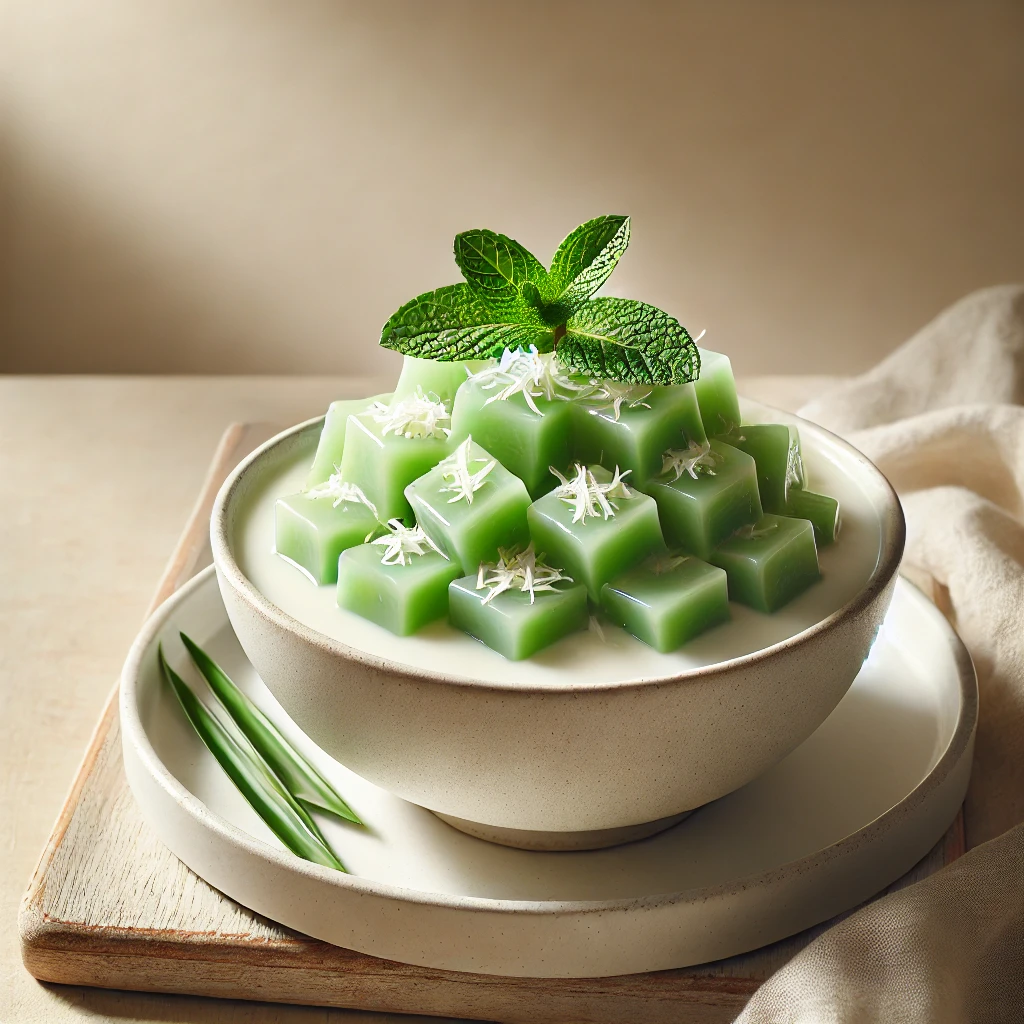Picture this: You’re sitting on a sun-drenched patio, sweat beading on your forehead as the tropical heat beats down. Suddenly, a colorful, towering glass of icy goodness appears before you. As you plunge your spoon into the vibrant layers, a symphony of flavors and textures unfolds – sweet, creamy, crunchy, and refreshing all at once. Welcome to the world of Halo-Halo, the beloved Filipino dessert that’s taking the culinary world by storm.
Halo-Halo, which translates to “mix-mix” in Tagalog, is more than just a dessert – it’s a cultural icon, a summer ritual, and a testament to the Filipino love for bold flavors and playful combinations. This sensational treat brings together a dizzying array of ingredients, from sweetened beans and jellies to fresh fruits and leche flan, all crowned with a generous scoop of ube ice cream and a sprinkle of crunchy rice crispies.
What makes Halo-Halo truly special is its versatility. While there are traditional components, the beauty of this dessert lies in its adaptability. Whether you’re vegan, gluten-free, or simply adventurous, there’s a Halo-Halo variation for everyone. In this blog post, we’ll dive deep into the world of Halo-Halo, exploring its history, ingredients, and the art of crafting the perfect glass of this Filipino favorite.
Recipe Ingredients
Before we embark on our Halo-Halo adventure, let’s gather our ingredients. Remember, Halo-Halo is all about personalization, so feel free to mix and match based on your preferences or what’s available. Here’s a classic combination to get you started:
| Ingredient | Quantity | Notes |
|---|---|---|
| Shaved ice | 2 cups per serving | The foundation of any good Halo-Halo |
| Evaporated milk | 1/4 cup per serving | For creaminess |
| Sweetened red beans | 2 tablespoons | Also known as “adzuki” beans |
| Sweetened white beans | 2 tablespoons | Optional, for variety |
| Coconut gel (nata de coco) | 2 tablespoons | Adds a unique texture |
| Kaong (sugar palm fruit) | 2 tablespoons | Sweet, jelly-like fruit |
| Macapuno (coconut sport) | 2 tablespoons | Soft, thread-like coconut strips |
| Jackfruit | 2 tablespoons | Fresh or canned, for tropical flavor |
| Ube halaya (purple yam jam) | 2 tablespoons | A Filipino favorite |
| Leche flan | 1 small slice | Rich egg custard |
| Ube ice cream | 1 scoop | The crowning glory |
| Rice crispies | 1 tablespoon | For added crunch |
Substitution suggestions:
- For a vegan version, replace evaporated milk with coconut milk and omit the leche flan.
- If ube ice cream is unavailable, vanilla or mango ice cream work well too.
- Can’t find specific Filipino ingredients? Get creative with local fruits, jellies, and sweet preserves.
Recipe Instructions
Now that we have our ingredients ready, let’s dive into the art of assembling the perfect Halo-Halo. Follow these steps for a refreshing treat that’s sure to impress:
- Prepare the ice:
Start by shaving or crushing the ice. If you don’t have an ice shaver, a blender can work in a pinch. Aim for a snow-like consistency. - Layer the base ingredients:
In a tall glass or bowl, add small portions of the sweetened beans, coconut gel, kaong, macapuno, and jackfruit. This creates a colorful and flavorful foundation. - Add the shaved ice:
Gently pack the shaved ice on top of the base ingredients, forming a small mound above the rim of the glass. - Pour the milk:
Slowly drizzle the evaporated milk over the ice, allowing it to seep through the layers. - Add the ube halaya:
Place a generous dollop of ube halaya on top of the ice. Its vibrant purple color will create a beautiful contrast. - Crown with leche flan and ice cream:
Carefully place a slice of leche flan on one side of the mound, and a scoop of ube ice cream on the other. - Sprinkle the topping:
Finish off your Halo-Halo with a sprinkle of rice crispies for a delightful crunch. - Serve and enjoy:
Provide a long spoon and encourage your guests to mix all the ingredients before eating. The name “Halo-Halo” means “mix-mix,” after all!
Pro tip: For an extra indulgent twist, drizzle some condensed milk over the top just before serving.
Recipe Tips & Variations
Halo-Halo is all about personalization and creativity. Here are some tips and variations to help you craft your perfect dessert:
- Temperature is key: Serve Halo-Halo immediately after preparation to prevent the ice from melting too quickly. Pre-chill your serving glasses for an extra-refreshing treat.
- Texture play: Experiment with different textures to keep things interesting. Try adding chewy tapioca pearls, crunchy peanuts, or soft sago pearls.
- Fruit variations: While jackfruit is traditional, feel free to use seasonal fruits like mango, strawberries, or kiwi for a fresh twist.
- Ice cream alternatives: Don’t limit yourself to ube ice cream. Try flavors like mango, coconut, or even cheese ice cream (a Filipino favorite) for a unique spin.
- Vegan version: Use plant-based milk, vegan ice cream, and omit the leche flan. Add extra fruits and jellies to compensate for the missing ingredients.
- Mini Halo-Halo: Create a bite-sized version using shot glasses for a fun party dessert.
- Storage: Halo-Halo is best enjoyed fresh, but you can prepare and store the individual components separately in the refrigerator for up to 3 days.
High-Quality Photos
[Note: As an AI language model, I cannot generate or include actual photos. However, in a real blog post, this section would include visually appealing photos of the finished Halo-Halo, as well as step-by-step photos of the preparation process.]
Nutritional Information
While Halo-Halo is undoubtedly a treat, it’s helpful to be aware of its nutritional content. Keep in mind that these values can vary based on specific ingredients and portions:
| Nutrient | Amount per Serving |
|---|---|
| Calories | Approximately 350-400 |
| Total Fat | 10-15g |
| Saturated Fat | 6-8g |
| Cholesterol | 50-70mg |
| Sodium | 100-150mg |
| Total Carbohydrates | 60-70g |
| Dietary Fiber | 3-5g |
| Sugars | 40-50g |
| Protein | 7-10g |
Note: This nutritional information is an estimate based on typical ingredients. Your Halo-Halo may vary depending on specific components and portion sizes.
Conclusion
As the last spoonful of your homemade Halo-Halo melts away, you’re left with a sense of satisfaction that only this Filipino gem can provide. It’s more than just a dessert; it’s a journey through flavors, textures, and cultural heritage.
I remember my first encounter with Halo-Halo on a sweltering summer day in Manila. The riot of colors in the glass intrigued me, but it was the harmonious blend of flavors and the cooling relief it provided that won me over. From that moment, I was hooked, and I’ve been on a mission to perfect my Halo-Halo game ever since.
Now it’s your turn to embark on this delicious adventure. Don’t be afraid to experiment with different ingredients and find your perfect combination. And remember, the beauty of Halo-Halo lies in its versatility – there’s no wrong way to enjoy it!
We’d love to hear about your Halo-Halo experiences. Did you try our recipe? What’s your favorite ingredient combination? Share your creations and thoughts in the comments below or tag us on social media. And if you enjoyed this Filipino delight, why not explore more of our Asian-inspired dessert recipes? From Thai Mango Sticky Rice to Japanese Matcha Parfait, there’s a world of sweet adventures waiting for you on our blog.
Stay cool, stay sweet, and keep mixing up your culinary world with Halo-Halo!
Additional Elements
Related Recipes and Pairings:
- Filipino Leche Flan: Master the art of this creamy custard, a key component in Halo-Halo.
- Ube Halaya: Learn to make this purple yam jam from scratch for an authentic touch.
- Mango Float: Another refreshing Filipino dessert perfect for summer.
Serving Suggestions:
Halo-Halo is typically enjoyed as a dessert or afternoon snack. For a fun twist, try serving it at brunch alongside savory Filipino dishes like longanisa (sweet sausage) or tocino (cured pork). The contrast between sweet and savory will delight your taste buds!
Equipment Recommendations:
- Ice shaver or crusher: For the perfect snow-like ice consistency.
- Tall glasses: To showcase the beautiful layers of your Halo-Halo.
- Long spoons: Essential for reaching the bottom layers and mixing.
Historical and Cultural Context:
Halo-Halo’s origins can be traced back to the pre-war Japanese settlers in the Philippines, who introduced kakigōri (shaved ice dessert) to the country. Filipinos adapted this concept, incorporating local ingredients and flavors to create what we now know as Halo-Halo.
Over time, Halo-Halo has become deeply ingrained in Filipino culture, symbolizing the nation’s love for diverse flavors and its ability to create something uniquely Filipino from various influences. Today, you’ll find Halo-Halo everywhere from humble street carts to high-end restaurants, each offering its own special twist on this beloved dessert.
The popularity of Halo-Halo has spread beyond the Philippines, gaining recognition in international culinary scenes. It has been featured on popular food shows and has found its way onto menus in Filipino restaurants worldwide, introducing global audiences to the joyful mix of flavors that defines Filipino cuisine.
[Note: In a real blog post, this section might include an embedded video tutorial showing the step-by-step preparation of Halo-Halo.]
Disclaimer: This blog post is based on information available up to 2019. While we strive for accuracy, culinary trends and ingredient availability may have changed since then. Please feel free to report any inaccuracies so we can correct them promptly.




